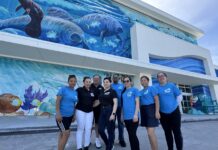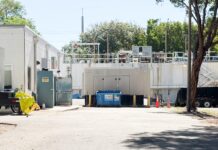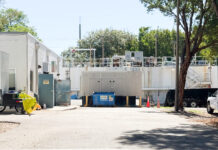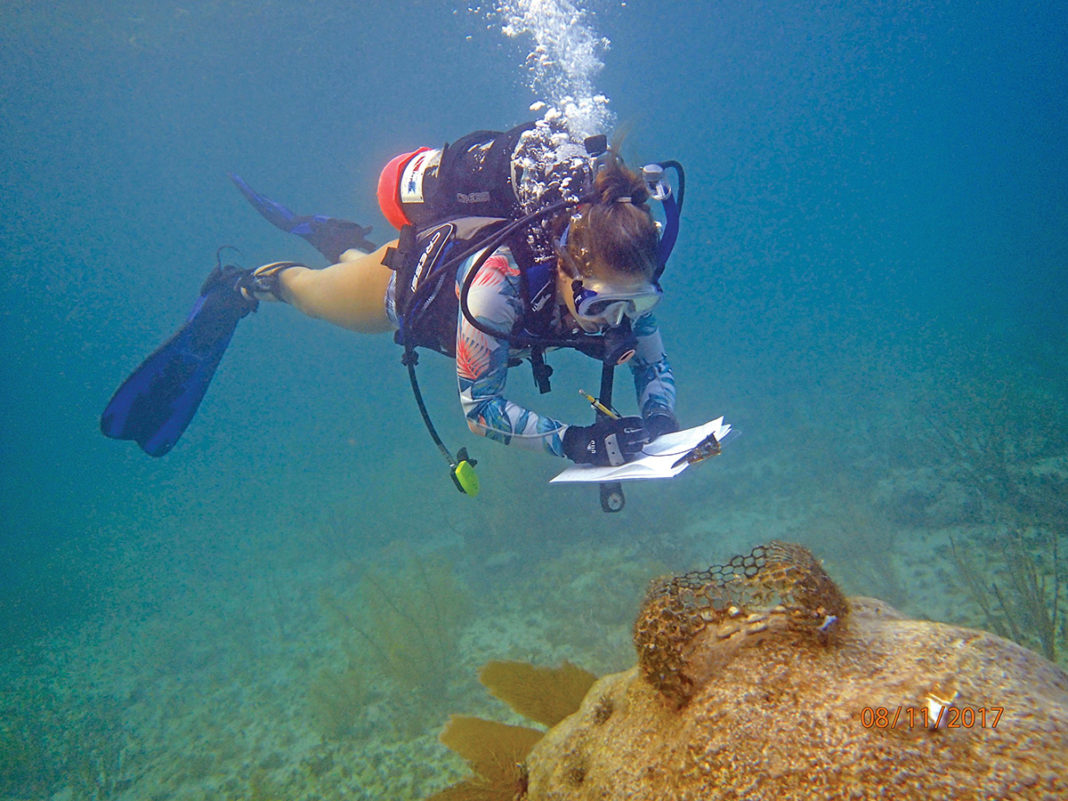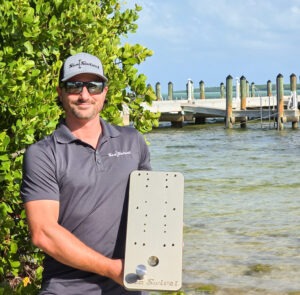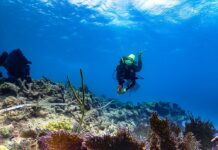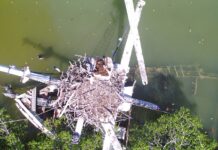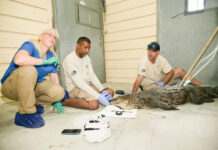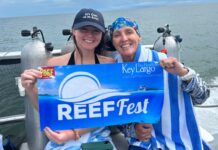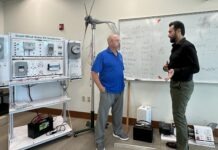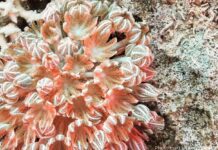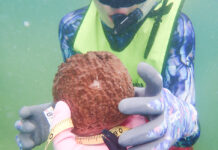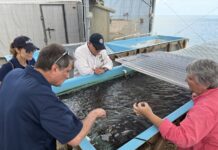“Because you’re all here tonight, I know I don’t have to remind you all of the importance of coral reefs,” said Paige Carper during Coral Restoration Foundation’s Sips and Science event. Carper works as a restoration associate for CRF, but got her start in the field much earlier. She presented her master’s research to an enthralled audience of “coral nerds” and enthusiasts.
“I have always been interested in coral reefs and have been a witness to their declining health over the years in the Florida Keys,” Carper said. This is where coral restoration comes in: “Coral restoration is a necessary step to get reefs back to a healthy state. Climate change and numerous other factors have and continue to contribute to a decline in live coral tissue. However, despite many colonies experiencing negative results, there are the few that continue to persist. Through restoration, we can continuously add live tissue to the reefs that are declining, while striving to learn more about why certain corals are surviving.”
Generally, coral restoration involves placing identical fragments of coral species close together onto old reef with glue, nails, epoxy, twine, etc. “The hope,” Carper adds, “is that the corals will grow over their pucks, fuse together, and become one huge, sexually-reproductive adult in a fraction of the time it would have taken to grow that same colony from a single coral recruit.”
Carper describes the more specific aims of her research — a predator exclusion experiment. Carper specifically focused on parrotfish predation of newly out-planted coral fragments, which had been observed to cause mass mortality of the new corals. She designed an experiment to look into the short- and long-term effects these fish have on three species of corals under three separate treatments for restoration.
The experiment compared growth rates of corals that were caged, open, and cage-controlled (cage materials are present but not covering the corals). Carper’s research focused on three species of corals that were commonly found throughout the Florida Keys.
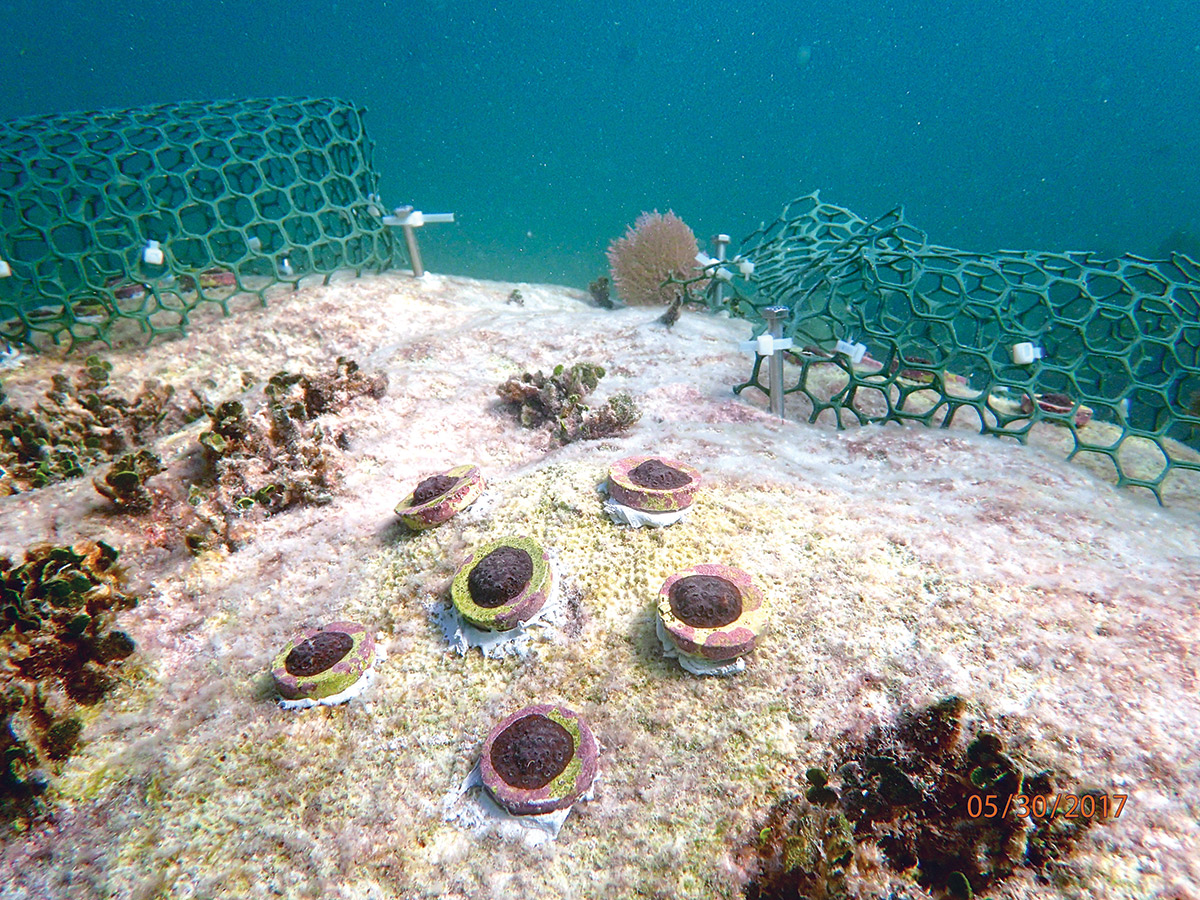
“Unfortunately, their live tissue cover has decreased drastically over the years, as has happened with many coral species in this region,” she said.
Coral restoration often focuses on historically-dense populations of corals that have been lost to various stressors in hopes of jump-starting ecosystem-level recovery. “My main goal was to improve techniques for future restoration work and coral fragment success and survival,” said Carper.
“Now it gets fun! Hang on,” Carper said, explaining the week-to-week comparisons of coral growth under different array-types (treatments with a cage, open with no cage, and with a cage control). And then her plot twist comes in: “Imagine you’re a coral and you’re trying to hang on against parrotfish, storms, bleaching, etc. and then you get slammed with a hurricane.”
Hurricane Irma hit the Keys in the middle of Carper’s experiment, destroying all the caged and cage-control treatments along with much of the lower Keys community that the experiment was based out of. Jessica Levy, from CRF, asked Carper, “After Irma, the fish had no idea what to do, or where they were. The fish just went in a washing machine. Did that affect your results?” Carper said it might have, describing how her statistical analysis was warped by this anomaly and how she’d love to replicate her project and compare these results with a non-storm year.
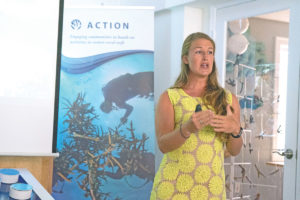
Notwithstanding the storm, Carper finished her experiment as best she could and ended up with a few key conclusions and takeaways for coral restoration: “Coral fragments out-planted in a vertical orientation typically experienced less bleaching in times of elevated temperatures than those out-planted horizontal on the tops of mounds. This small change in our techniques may alleviate some stress during the increasingly hot summers.”
“So, what would I do different?” asked Carper. “Not have a hurricane!” But, Irma aside, Carper was thrilled personally to put live coral tissue back into the environment and to observe how much growth was achievable in just one year. “It made me hopeful for the future of those out-plants and restoration as a whole,” she said.
Carper concluded with the hope that her findings will be used in restoration of these bouldering species within the region and to spark an interest in other scientists studying other ways to improve restoration efforts. “When I began my master’s program, bouldering species of corals being used in restoration work was still fairly new, especially to the Florida Keys. Now, the Florida Keys have lost a drastic amount of live coral cover. Many reefs today appear barren and almost desert-like. If the coral reefs in the Keys are to once again thrive, restoration is essential.”





